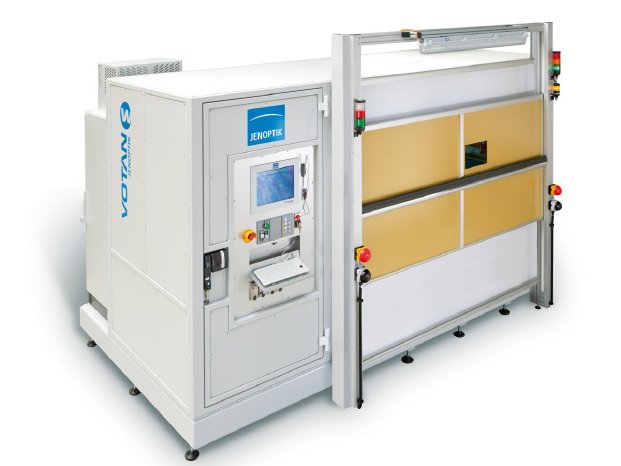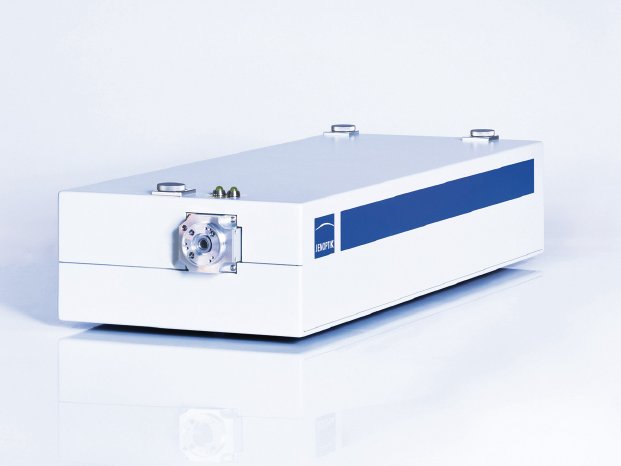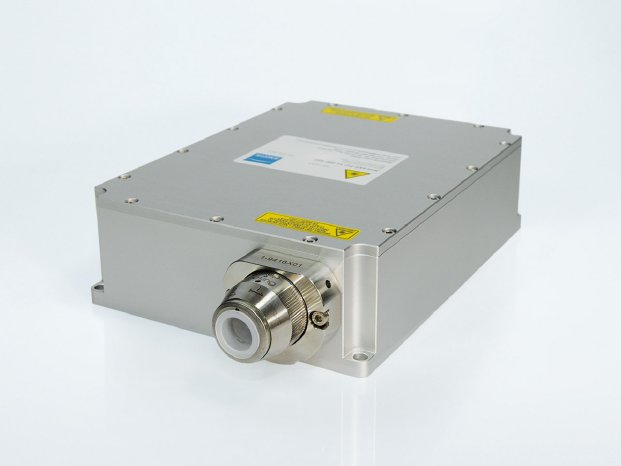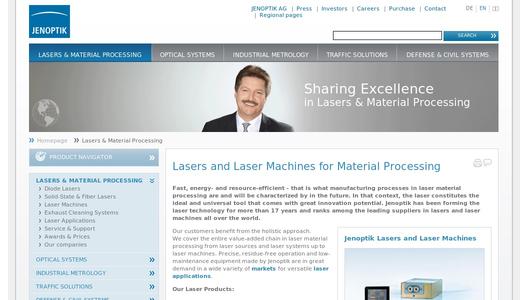Non-contact laser welding with the JENOPTIK VOTAN® W
Thanks to the latest laser technology, new fields of application in material processing keep opening up. In the fields of plastics cutting, welding and perforating, laser technology is an established and recognized practice, for example in the automotive and supply industries. Due to the increase in vehicle interior equipment and the growing demand for safety, automotive manufacturers face one new challenge after the other. These can reliably be mastered by using the JENOPTIK VOTAN® W.
At the “K” plastics trade fair in Düsseldorf, Jenoptik is to show its latest development in the field of plastics welding: In order to broaden the field of application of transmission welding, Jenoptik has developed a welding process involving a laser line that can be switched on and off in sections. This novel process has successfully been applied in the industry several times already.
The non-contact joining method without any mechanical and thermal influence is not the only essential benefit of this new technology. It also brings high productivity and comparatively low operating costs. This innovative method is applied in the transmission welding of large plastic components, e.g. welding of shot channels in instrument panels or welding of door linings.
Innovative Jenoptik diode lasers with a width of 10 millimeters (mm) and an optical laser power of up to 100 watts per submount for the standard wavelengths of 808, 940 and 980 nanometers are used for the newly developed laser welding technique. The diode laser line, that can be switched on and off in sections, comprises eight diode laser submounts in a compact housing and generates a line of about 100 mm in overall length. Each submount can be switched on and off individually based on the contour to be welded and thus produce nearly any welding geometry. By combining several diode laser lines in one overall line, the so-called diode nest, nearly all component sizes can be welded in a highly productive way during one and the same passage. All in all, an area of maximally 1,500 mm x 600 mm can be welded in one passage.
Inside the laser welding machine, the diode nest moves along a linear axis, across the components to be joined, and firmly welds them to each other without leaving any marks (sinks) on the top surface or causing any thermal distortion – at welding speeds of up to 100 mm/s. In order to ensure a constant weld quality, the entire welding process is made subject to online process control for quality assurance. When directly comparing this to alternative joining technologies, the strengths (pulling forces) of the welded joint in the boundary area and of the cover are 25 percent higher on average.
Experience a live demonstration of the switchable laser line of the robot system, the heart of the JENOPTIK-VOTAN® W laser machine, at the “K” in Düsseldorf, hall 11, booth C45, from October 16th to 23rd, 2013.
You can download a picture from our image data base at Lasers & Material Processing / Laser Systems.
JenLas® disk IR70E for efficient laser-based processing of carbon fiber-reinforced plastics
The JenLas® disk IR70E is a pulsed, diode-pumped single-mode disk laser. Due to the high pulse energy in combination with the short pulse duration and excellent beam quality, this laser is suitable for the nearly non-damaging and quick processing of carbon fiber-reinforced plastics (CFRP). The material is removed in layers. Hence, the laser is used for cutting, drilling and 3D ablation of CFRP materials (engraving etc.).
The JenLas® disk IR70E brings important advantages compared to other laser systems such as fiber, CO2 or lamp-pumped Nd:YAG lasers. For example, the heat-effected zone in the processing of CFRP using the JenLas® disk IR70E is insignificant. No discoloration is caused in bore holes and on cut edges. Thus, visible surfaces can also be processed without any refinishing operations. Thanks to the special pulse parameters, the harmful effects known in relation to CFRP such as delamination or foaming of the plastic material are avoided. Excellent results can be achieved especially when processing thermoset CFRP materials.
The demand for CFRP materials is growing rapidly, mainly driven by the increases in efficiency in the field of mobility, especially in the automotive and aviation industries. The processing of CFRP materials by means of lasers holds a lot of potential. The JenLas® disk IR70E is a module that enables us to efficiently use this potential.
CFRP samples cut, drilled and made subject to ablation processes using the JenLas® disk IR70E will be shown at the trade fair.
You can download a picture from our image data base at Lasers & Material Processing / Solid-state Lasers.
Fiber-coupled diode laser module for material processing
At the “K” trade fair in Düsseldorf, Jenoptik will show a half-bar, fiber-coupled diode laser module with an output power of 200 W from a 200 micrometer fiber. This device constitutes another element in the product portfolio of brilliant high-power diode laser modules of the Lasers & Material Processing division.
The JenLas® FC-12 200 module, first presented in May 2013, provides an output power of 200 watts from a 200 micrometer fiber with NA 0.2 and comes with a pilot laser and an internal performance control system. Thanks to the housing suitable for industrial applications and the plug-in high-power transport fiber, the 200 watt modules are ideal for direct material processing, e.g. hardening of functional surfaces or plastics welding. The high-power transport fiber can be chosen to suit the customer requirements based on the applied system. Due to the excellent beam quality and the long service life, this module can be used as a pumping source as well.
You can download a picture from our image data base at Lasers & Material Processing / Diode Lasers.
KATASORB® PRINT lowers costs by up to 85 percent
Jenoptik’s Lasers & Material Processing division will introduce its new system KATASORB® PRINT, especially designed for the printing industry, in Düsseldorf as well. It is a complete drying unit with integrated catalytic exhaust air purification and heat recovery. This first system, developed for integration in printing machines, helps reducing the operating costs of the printing plant by up to 85 percent compared to standard systems. KATASORB® PRINT is suitable for both initial installation and retrofitting in printing machines.
The concept owes its high efficiency to the catalytic substance conversion with its machine-oriented installation design and to the heat recovery and feedback into the drying unit. A printing machine equipped with a KATASORB® PRINT unit and a comparable machine with an exhaust air purification system that did not have catalytic support and that was not integrated in the plant were compared in a study. The result: By using the KATASORB® PRINT drying unit, up to 85 percent or even more of the operating costs and up to 211 tons of CO2 per year can be saved.
With the introduction of this innovative exhaust air purification solution Jenoptik enhances its profile as a supplier of user-oriented technologies for the reduction of industrial pollutant emissions. In the year 2012, Jenoptik had introduced the KATASORB® M system in the market, making new fields of application accessible through its flexibility and highly efficient catalytic afterburning.




